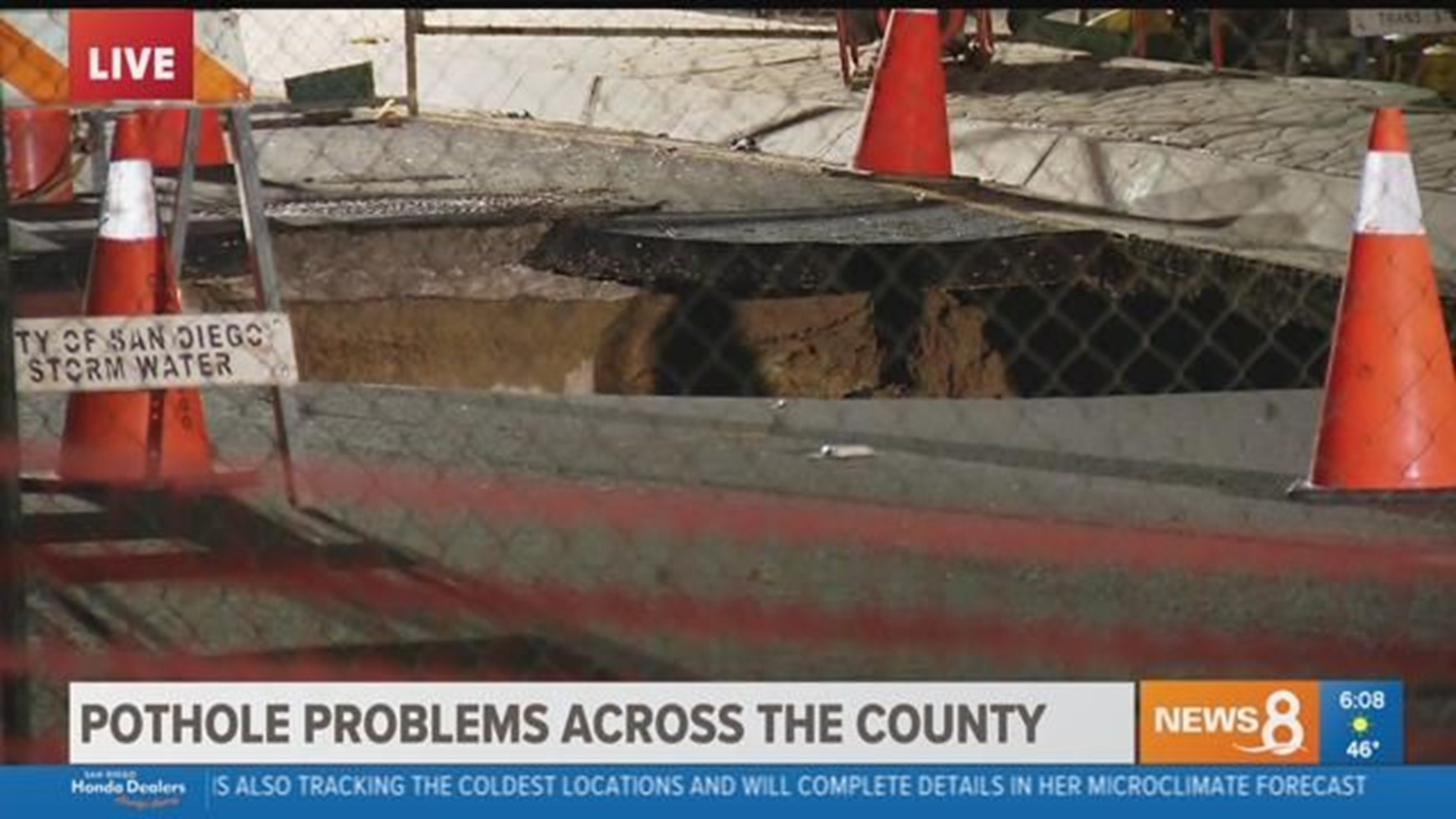

The work involves a kind of choreography among crew members, much of it unspoken. They reported fixing 4,810 of those and spent, on average, 16 days to do so. 2, for example, the city received 12,094 pothole complaints.

That’s how the city makes sure holes that are reported by the public get repaired in a timely order.įrom May 20 through Feb. In San Diego, the pothole crews have some leeway to fix what they see as they’re driving, but generally they stick to the complaint tickets. It costs residents here an additional $722 per year in vehicle operating costs because of the road conditions, according to the group. According to a November 2016 report by TRIP, a transportation research group based in Washington, D.C., 46 percent of San Diego’s roads are considered “poor,” the 15th worst showing among urban areas with populations exceeding 500,000. The vibration from vehicle tires accelerates the erosion, and the street comes apart in chunks. Potholes happen when water seeps into cracks in the pavement and loosens what’s underneath. They left the Chollas yard and headed first to Vulcan Materials in Carroll Canyon, where they picked up about three tons of asphalt, kept hot by a propane heater in the truck bed. On Thursday, De’Arcy and Nuñez were assigned to Pacific Beach. It doesn’t do any good to have all the trucks assigned in Del Mar Heights, for example, if crews keep getting dispatched to other regions for emergency work. The city switched not long ago to a repair schedule based on City Council districts - all the trucks work the same district on the same day on a rotating basis - but that gets scrapped after storms, which tend to create potholes so large and hazardous they need to be repaired immediately. A supervisor brings each crew a stack of pothole “tickets,” that day’s assignments, drawn from the public complaints. at the massive city yard near Chollas Lake. No wonder crew members feel lucky if the heavy-duty boots they wear on the job last 12 months. That number is likely to be higher this year because of all the recent downpours. In the last fiscal year, the city patched 36,000 potholes, Santacroce said. They can fix a small hole in five minutes, and then they’re on their way to the next one while steam is still rising from the street.Įach crew fills dozens of holes every day, hundreds every week, thousands every month. The city’s eight two-person repair crews work 10-hour shifts, shoveling 350-degree hot asphalt from their trucks into the divots, raking it into place and compacting it with pneumatic rollers. When it rains, though, it pours, pothole-wise.Īnd when it pours, they pour. Santacroce said graffiti typically rivals potholes for the top spot when it comes to service requests from the public.


 0 kommentar(er)
0 kommentar(er)
